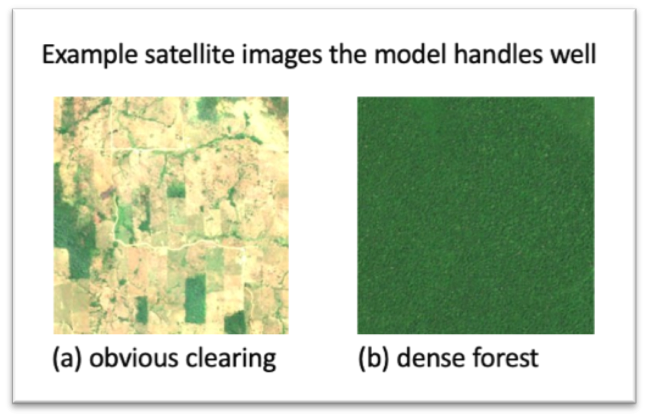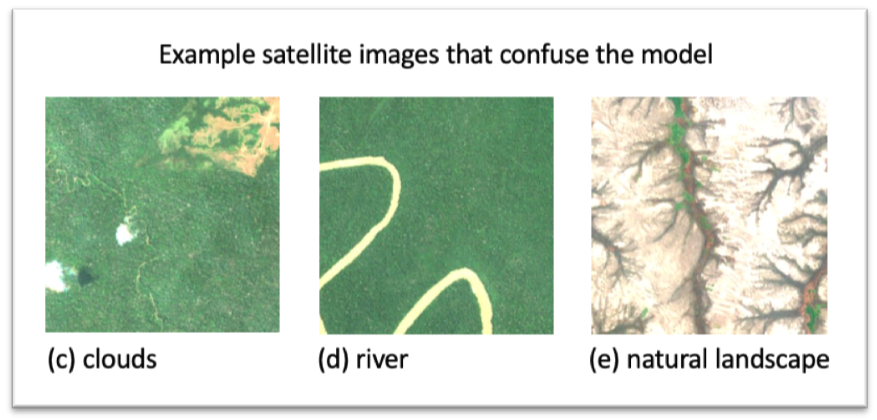 Ever thought you could help save the rainforest without ever visiting the rainforest? Probably not, but now is your chance, and you can use it as your way to give back this Earth Day.
Ever thought you could help save the rainforest without ever visiting the rainforest? Probably not, but now is your chance, and you can use it as your way to give back this Earth Day.
This year, Earth Day celebrations will look different for everyone as we work to find meaningful ways to virtually protect our planet. Our rainforest project gives you and your at-home teen the opportunity to help preserve our rainforests while learning a thing or two about artificial intelligence (AI) — talk about a parenting WIN! Here’s your guide to an engaging learning-from-home activity for Earth Day.
This guide is broken into four steps:
Understand how AI can go to work for humanity
Discover how you can use AI to benefit the rainforest
Lend a hand by classifying images
Keep going! Find other opportunities to solve problems with AI
Step 1: Understand how AI can go to work for humanity.
Whether it’s the power created through electricity or the global connectivity created through the internet, we can look back throughout human history and see how technology has transformed the way people live and work. AI is just the latest of these technologies. From digital home assistants to self-driving cars, AI has changed the way we think about working, driving, learning and so much more.
AI combines the best of people and machines — bringing together computers’ processing speed and lack of fatigue with human intelligence to create something otherwise impossible in isolation. With AI, we can train computers to do things that are dangerous for humans (e.g., exploring hazardous environments) and offload tasks to a computer that we simply do not have the stamina to do (e.g., continuously monitor security video feeds). Unlike more straightforward problems with a clear set of rules, these tasks are riddled with unknowns and unpredictable circumstances. Therefore, computer programmers have difficulty developing the rules a computer needs and use AI to develop that set of instructions.
For example, consider a computer program designed to grade student work that has several multiple-choice questions and an essay question. The multiple-choice questions offer four answer choices, but each question only has one correct answer. The programmer will write traditional code to evaluate whether each answer is correct. The rule is simple: does the student answer match the correct answer? Yes or no.
What about the essay question? There is not one correct essay answer. There may not even be rules on what makes an essay response correct or not. Does it have to be a certain length? A certain number of paragraphs? Are there words it should or should not contain? There’s no way to write a set of rules or instructions to grade an essay properly; it relies on judgement and careful evaluation of a variety of criteria.
This is a case where the programmer may choose to use AI instead of traditional code. To solve this problem, the programmer may start by gathering a set of sample essays, including strong and weak essays. The more examples she finds, the better. She’ll use these examples along with machine learning algorithms, allowing the computer to identify which criteria makes a good essay. While she won’t know in advance which rules the computer will generate, she can determine whether the computer’s rules are effective. She does this by testing the rules against her sample to see whether the strong essays are separated from the weak ones.
We can apply similar techniques when tackling some of the world’s biggest problems, like deforestation.
Step 2: Discover how you can use AI to benefit the rainforest.
SAS has partnered with IIASA to bring together AI expertise and scientific systems analysis to see the planet with new eyes. This partnership will automatically detect areas of deforestation in satellite imagery. By looking at millions of satellite images, the computer will alert scientists to areas of the rainforest impacted by deforestation. This gives us the ability to survey over a billion acres of rainforest in a short amount of time,and do so repeatedly as satellite images are updated.
“Since image analysis is an important first step for the accurate scope and projection of devastation, we are asking people to see what technology can’t by examining and reporting on images of smaller incremental forestry damage worldwide,” said van Jaarsveld. “Crowdsourcing helps improve the AI algorithms, expediting what used to take years to analyze, thus helping to drive vital policy changes to protect our forests more quickly.”

To date, the algorithm does a decent job. It can easily classify large, obvious clearings as deforestation and recognize entirely green areas as preserved . This is similar to grading the multiple-choice essay question described above. However, the task is not always that simple. While it is easy for a human to distinguish between a road, which signals human impact, and a river, which does not signal human impact, the model will not know the difference until it gets enough training from human observations.

To accomplish this, we need people like you to label thousands of tricky scenarios like the images seen above, as either having evidence of deforestation or not. When people flag regions that have seen signs of human impact, they make AI models smarter. That’s where you come in.
Step 3: Lend a hand by classifying images.
SAS has created an app that allows people around the world to help protect the Amazon rainforest by simply labeling satellite images. With thousands of people sorting just a few images, we can collect the labels we need quickly and without burdening any one person.
How many images will you label? Give it a try.
Step 4: Keep going! Find other opportunities to solve problems with AI.
Did you enjoy that activity? We hope so!
Did it spark your interest in using AI to solve problems in the world? If so, our friends at AI4All have additional resources for your exploration. With extension activities from free online courses about solving the problems you care about using AI to stories about individuals making a difference, there is so much to discover and delve into. And remember - there are always more rainforest satellite images to classify, so come back often!
